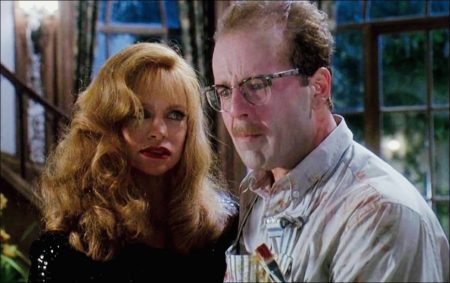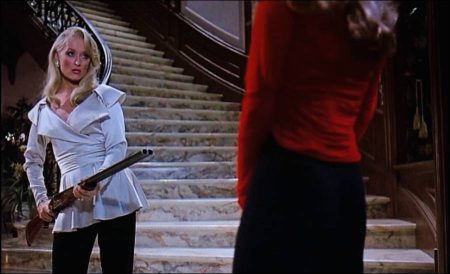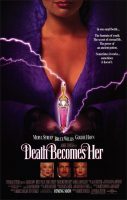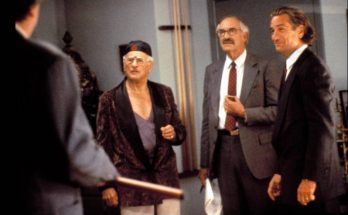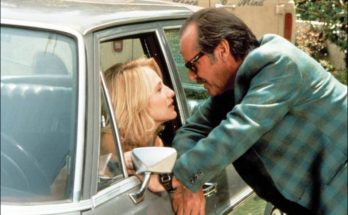Death Becomes Her is a story of sabotage and betrayal. Madeline Ashton (Meryl Streep) and Helen Sharp (Goldie Hawn) have acted as toxic friends in one another’s lives since childhood. Helen Sharp met and married plastic surgeon Ernest Menville (Bruce Willis), thinking her dreams of a happy life had been fulfilled. Madeline’s malicious and competitive spirit becomes apparent when she purposefully breaks apart the marriage and subsequently marries Ernest herself.
Death Becomes Her movie synopsis. This tragedy sends Helen into a downward spiral, eventually landing her in a mental institution. Meanwhile, the marriage between Ernest and Madeline becomes more and more miserable as it becomes apparent that Madeline has never even liked him and will never love him. Madeline’s misery is manifested into an adulterous affair and thousands of dollars spent on cosmetic surgery. She longs to be young and single again, while resentment grows toward her husband. Madeline is tempted into taking a potion, one that will stop the aging process and send it into reverse.

She will soon be at her utmost physical perfection, a state she has missed and longed for for years. Her newly regained youth gives her confidence beyond expectation and she decides to pay a visit to her old friend Helen. She assumes that Helen is still overweight, after gaining weight in the mental institution, but finds her to be younger looking and fitter than ever. The old, long dead competition between the two women is reignited. Both want Ernest and will stop at no cost to have him. The competition becomes presumable deadly, until it is apparent that Helen has taken the same potion. This long time rivalry takes them both to very unexpected places.
Death Becomes Her is a 1992 American black comedy directed by Robert Zemeckis, written by David Koepp and Martin Donovan, and starring Meryl Streep, Bruce Willis, and Goldie Hawn. The film focuses on a pair of rivals (Streep and Hawn), who drink a magic potion that promises eternal youth, but experience unpleasant side effects when they physically die, becoming walking, talking corpses in the process.
Death Becomes Her won the Academy Award for Best Visual Effects. The film received mixed reviews from critics, but was a commercial success, grossing $149 million worldwide. It has developed a strong cult following, particularly among the LGBT community.
Film Review for Death Becomes Her
The 1992 black comedy Death Becomes Her is a dark, hysterical fantasy about superficiality, beauty and femme fatales. Directed by Robert Zemeckis of the Back to the Future trilogy and Who Killed Roger Rabbit?, the movie mimics the same outlandish stories, offset by even more outrageous visual effects.
Starring Goldie Hawn, Meryl Streep and Bruce Willis — a quizzical combination that works exceptionally well — the movie follows the story of a meek writer, Helen (Hawn) and her long-time rival, actress Madeline (Streep), who excel in their roles as anti-heroines. Madeline invites Helen and her fiancé Ernest (Willis), a successful plastic surgeon, to a terrible Broadway musical she is starring in. Helen puts Ernest to the test, as Madeline has stolen every beau Helen introduced her to.
Much to Helen’s dismay, he becomes smitten with Madeline —an aging actress who sees the advantage of befriending a plastic surgeon — and breaks off his engagement with her to marry Madeline. Helen plummets into a catatonic breakdown, and vows to exact revenge.
We see 14 years go by, and Madeline is no longer an impressive actress and lives with an alcoholic Ernest, who has been ‘professionally demoted’ to a reconstructive mortician. They receive an invite for Helen’s launch party for a novel she’s written on retaining her beauty and youth. Madeline is baffled by Helen’s youthful, radiant appearance and desperately tries to find a solution to preserve her own beauty. Helen, meanwhile, lays the groundwork for seducing Ernest and convinces him to kill Madeline. What follows is an improbable, fantastical series of events that lead the trio down a macabre path of no return.
Streep and Hawn’s uninhibited performances as two defiant, demanding women, who do not care a fig about their likability, was an inherently unique concept at the time of the movie’s release. The crass dialogue and spectacular fighting, by women no less, was an extraordinarily novel concept executed by Hollywood’s leading ladies. What clinched the story was Willis’ bumbling, panicky Ernest as a foil to the two dynamos. Best known for his action movies, Willis surprisingly held his own in the comedic department, selling the jaded, middle- aged mediocre leading man with ease.
“You really can’t underestimate the entertainment value of two women swinging shovels at each other,” said David Koepp, co-writer of Death Becomes Her at the time. It is precisely this campy storyline and slapstick humour that sells the movie beyond a preachy parable. The powerful satire on superficiality and a woman’s worth being based solely on her looks and desirability, the malicious banter and the brilliantly grotesque make-up and special effects are what made Death Becomes Her a cult classic. The movie has aged well, with still-recognisable pop culture references, an ironic feminist ending and grisly fights (those never cease to please the audience).
Death Becomes Her (1992)
Directed by: Robert Zemeckis
Starring: Goldie Hawn, Bruce Willis, Meryl Streep, Isabella Rossellini, Ian Ogilvy, Adam Storke, Alaina Reed-Hall, Michelle Johnson, Mary Ellen Trainor, Sonia Jackson
Screenplay by: Martin Donovan, David Koepp
Production Design by: Rick Carter
Cinematography by: Dean Cundey
Film Editing by: Arthur Schmidt
Costume Design by: Joanna Johnston
Set Decoration by: Jackie Carr
Art Direction by: William James Teegarden
Music by: Alan Silvestri
MPAA Rating: PG-13 for some nudity and off-color humor.
Distributed by: Universal Pictures
Release Date: July 31, 1992
Views: 600
